Croughton, Northamptonshire (†Peterborough) c.1310
Scenes from the Passion
The Passion Cycle on the north wall at Croughton is seriously damaged and faded and very few of the scenes are even tolerably clear. I have nevertheless managed to isolate one or two of them. Below is the Last Supper, once a very fine piece of work, now faded and incomplete, although it rewards patient scrutiny.
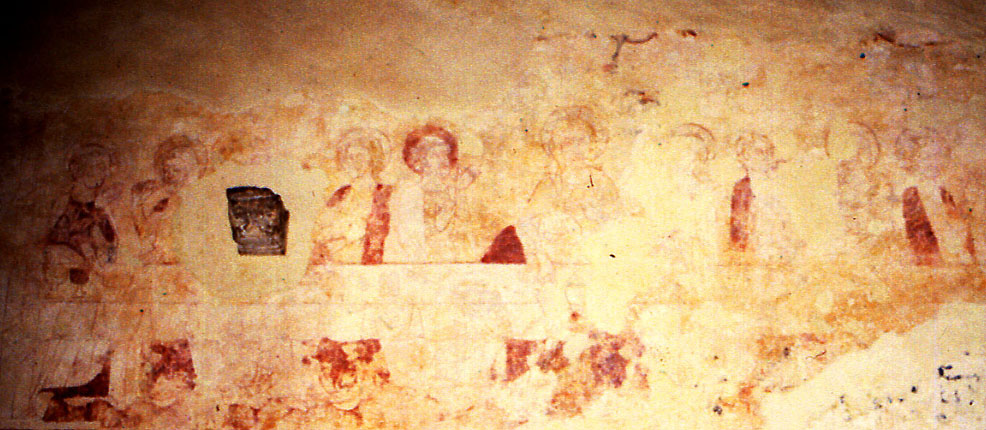
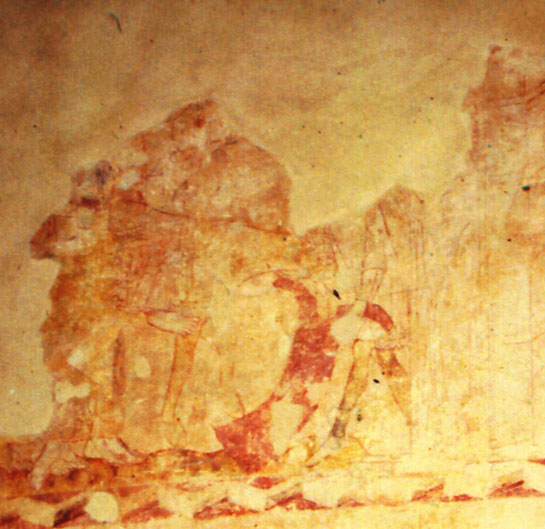
Some things remain clear, at least in general outline. Jesus himself, with the cruciform halo and painted as a larger figure than anyone else, is in the centre of the very long table. It is hard to see, but his right arm is crooked around St John, who is lying on his breast as in John 13:25 , and he reaches across the table to give the sop to Judas, who is reduced to indistinguishable patches of pigment on the other side of the table.
The next distinguishable scene is the Arrest in Gethsemane, as usual crowded and tense, not to say chaotic. There is a confused impression of crowded-together bodies on the left, with only some legs and feet fairly clear, but there is more than a hint of a slanting line slightly above the vertical midpoint of the scene, and this culminates in, indeed resolves into, the fallen figure of a man in a long robe and a conical ‘Jewish’ hat. This is almost certainly the High Priest’s servant of Matthew 26:51, fallen under Peter’s sword. A soldier in a short tunic helps him to his feet. Several buildings, suggesting a city with a gate, show faintly at the extreme right. One oddity is a large bare right foot, suggesting that a disciple, possibly Peter again, has leaped to fend off the soldiers. What is left of the scene resembles a street fight more than anything else.
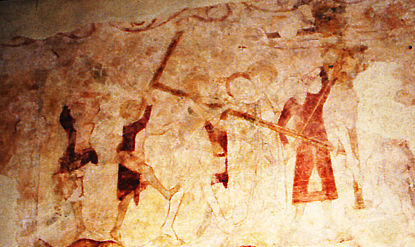
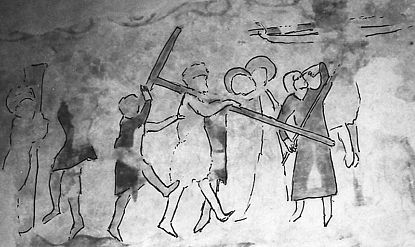
Next comes a series of scenes, painted as a continuous narrative sequence and starting at the left with a desperately faint Scourging at the Pillar. Little is left of the figure of Christ, who is tied to the pillar, but a figure with an upraised scourge and facing left, is easier to see. Next comes another torturer, his hand raised pushing Christ along and perhaps kicking him. Christ should be identifiable by his white legs and the Cross over his shoulder. At least one other torturer is in the procession too, and two faint heads further right are, I think, probably Mary and John. Finally at the right comes the Crucifixion, and this and the Calvary procession show more clearly in the black and white photograph, with salient details outlined, below.
The Crucifixion is at the far right, and to the left of it, giving Christ the death-blow, Longinus points to his previously blind eye as it is healed by the spurting blood. This is perhaps the clearest example of this detail remaining in an English church wall painting. At Peakirk Longinus points to his eye in similarly theatrical fashion, and the painting there is of around the same date as the Croughton example, although Croughton has the edge on it for quality, and the entire scene of the march to Calvary still pulsates with malevolent energy despite the damage to it.
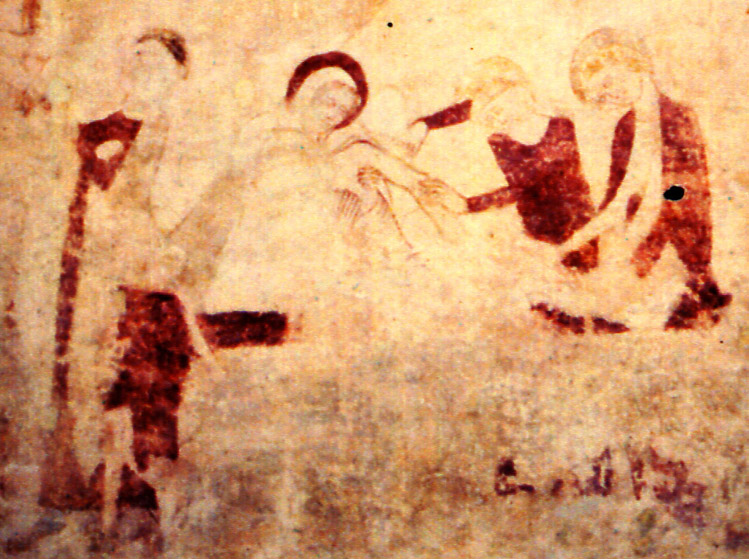
The next visible scene, the Entombment (below at the right) shows a dramatic change of mood. It is hard to say whether the central figure, supporting Christ’s head and upper body, is male or female; either way, this head and face are very finely detailed indeed. Two other figures, probably two of the Holy Women, are at the right, drawing the winding-sheet around the slumped body, on which the ribs are clearly delineated. At the left is another figure, this one almost certainly male and probably Joseph of Arimathea.
There is other painting further east along the wall. Tristram recorded a Harrowing of Hell and a Resurrection, but both were ‘much defaced’ then, and they have been reduced to incomprehensible fragments since.
A fragment of a Doom and a Weighing of Souls, the latter in reasonable condition, remain at Croughton, and these will be here soon. Some further scenes in the life of the Virgin may be salvageable too, and I will include them if they are. The Flight into Egypt has been on the site for some time. But for all its faded and fragmentary nature now, the Croughton Passion Cycle was once a superb example of 14th century work.